
Indeed, roguelite deckbuilders are a fascinating blend of various concepts, often combining aspects from diverse sources. To illustrate this, let’s consider Drop Duchy. In essence, it’s like a unique amalgamation born from the union of Slay the Spire, Dorfromantik, Balatro, and Tetris, all rolled into one captivating package.
Sleepy Mill Studio’s unique spin on this well-known genre is quite clever: It’s like playing Tetris, but the blocks aren’t just colors – they symbolize different types of terrain such as plains, forests, and rivers. Instead of disappearing once a row is filled, you acquire resources based on the land you used to complete it. Resources like food, wood, stone, and gold are collected in this manner, much like in a strategy game.
In certain instances, specific elements aren’t related to the terrain itself; they are structures like buildings. The variety of landscape you encounter depends on the location you’re exploring at the moment. However, the buildings that appear on your screen are determined by the cards you have in your hand. This is known as deckbuilding. You can cultivate farms on open plains and enhance them into fields to yield extra food, or construct a bridge across rivers which generates gold for each connected river tile, among other possibilities.
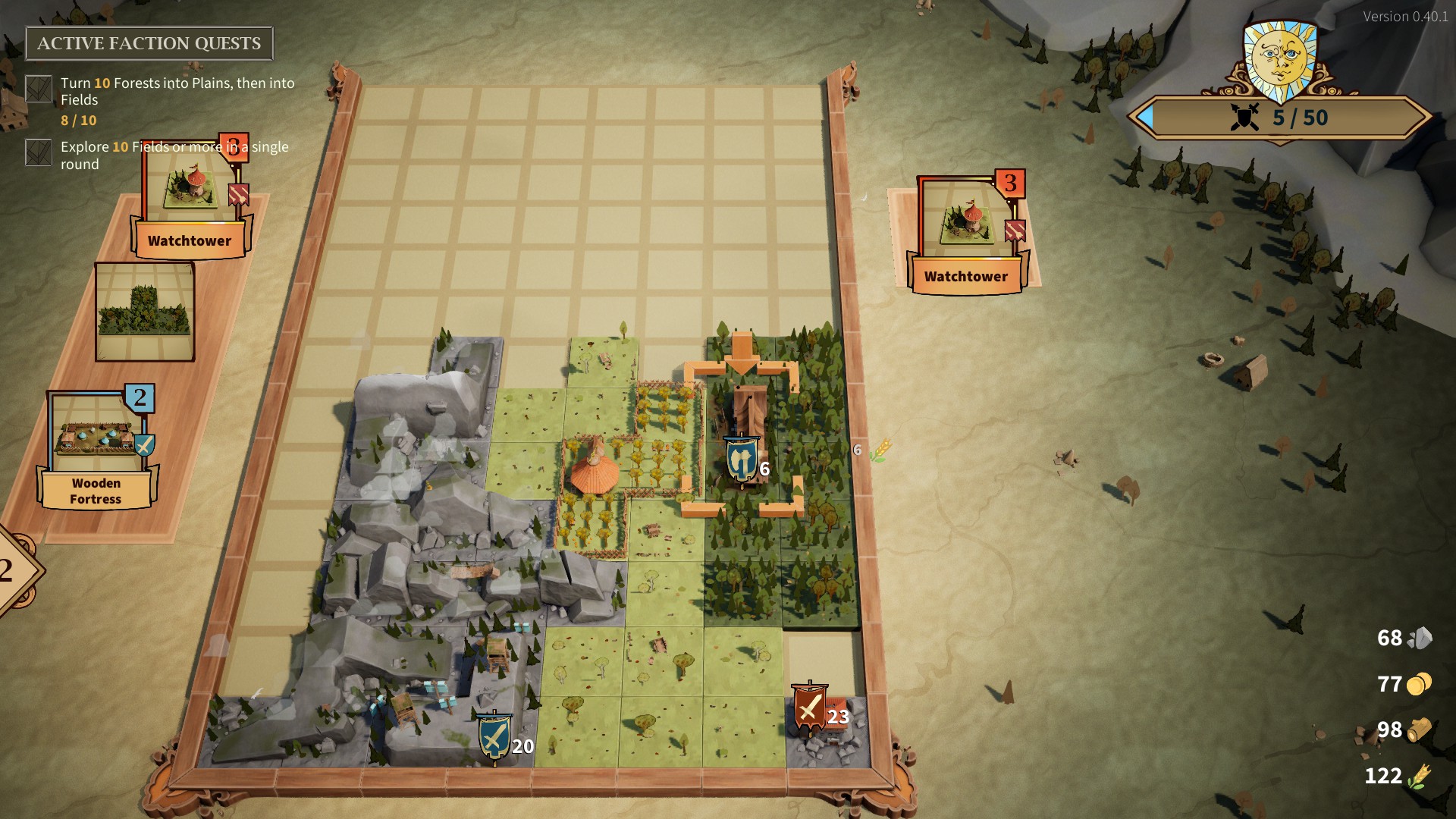
It’s clear where this game leads: Arranging your buildings and tiles strategically is crucial for collecting resources efficiently. However, there are hurdles along the way. First, luck plays a significant role: You don’t control the sequence in which tiles appear. You only have one reserve slot to save a tile for later, but beyond that, you must work with what you get. Secondly, there are hazardous tiles that will require you to adjust your strategy on the spot. It’s best to avoid placing an enemy fortress near your woods, as it would strengthen their military forces.
As you delve deeper into the game, both your own deck and that of your adversary grow in intricacy and potency. In keeping with typical roguelike deckbuilders, you accumulate fresh cards as you traverse the overworld map, which branches out into different paths and hubs. It’s here where you employ the resources you’ve amassed. You can boost your card abilities for enhanced effects, swap resources, or enlarge your hand—this will enable you to field more structures during an engagement and is crucial for success. Additionally, there are technology cards that offer passive advantages.
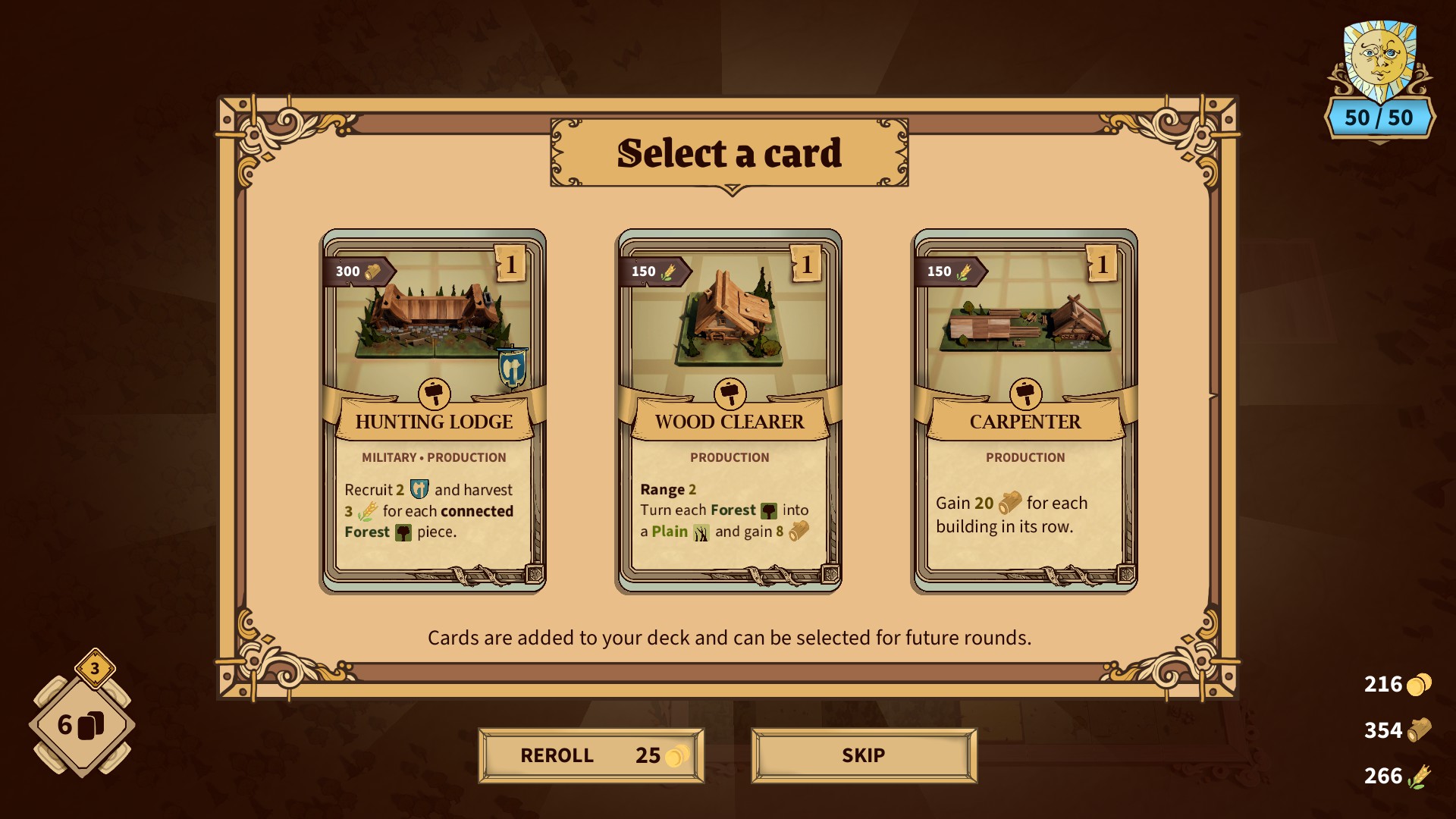
In Drop Duchy, the gameplay loop involves moving through stages and creating a deck that suits your comfort level. What sets this game apart is the possibility of avoiding combat during a run. While some stages may have enemy tiles, others might offer peaceful building and resource collection zones. However, every time you enter a peaceful zone, the boss at the end of the act becomes more formidable. This presents an interesting dilemma: do the additional resources provide enough power surge to counter the boss’s growth, or is it wiser to tackle a few enemy tiles and build up strength?
This leads us to discuss the game’s combat mechanics. Unlike traditional games where there’s a continuous exchange of offense and defense, in this game, you don’t exhaust energy or mana to play cards. Instead, you add tiles to the building area until all tiles from the pool are used up or a tile extends beyond the building area, typically due to it being full. This strategy allows for early termination of confrontations, albeit at the expense of reduced resource acquisition. The resolution of combat occurs afterwards. Buildings often have garrisons, particularly hostile ones, which grant them a basic number of troops. However, they can also acquire additional soldiers via tile effects and benefits from adjacent buildings.
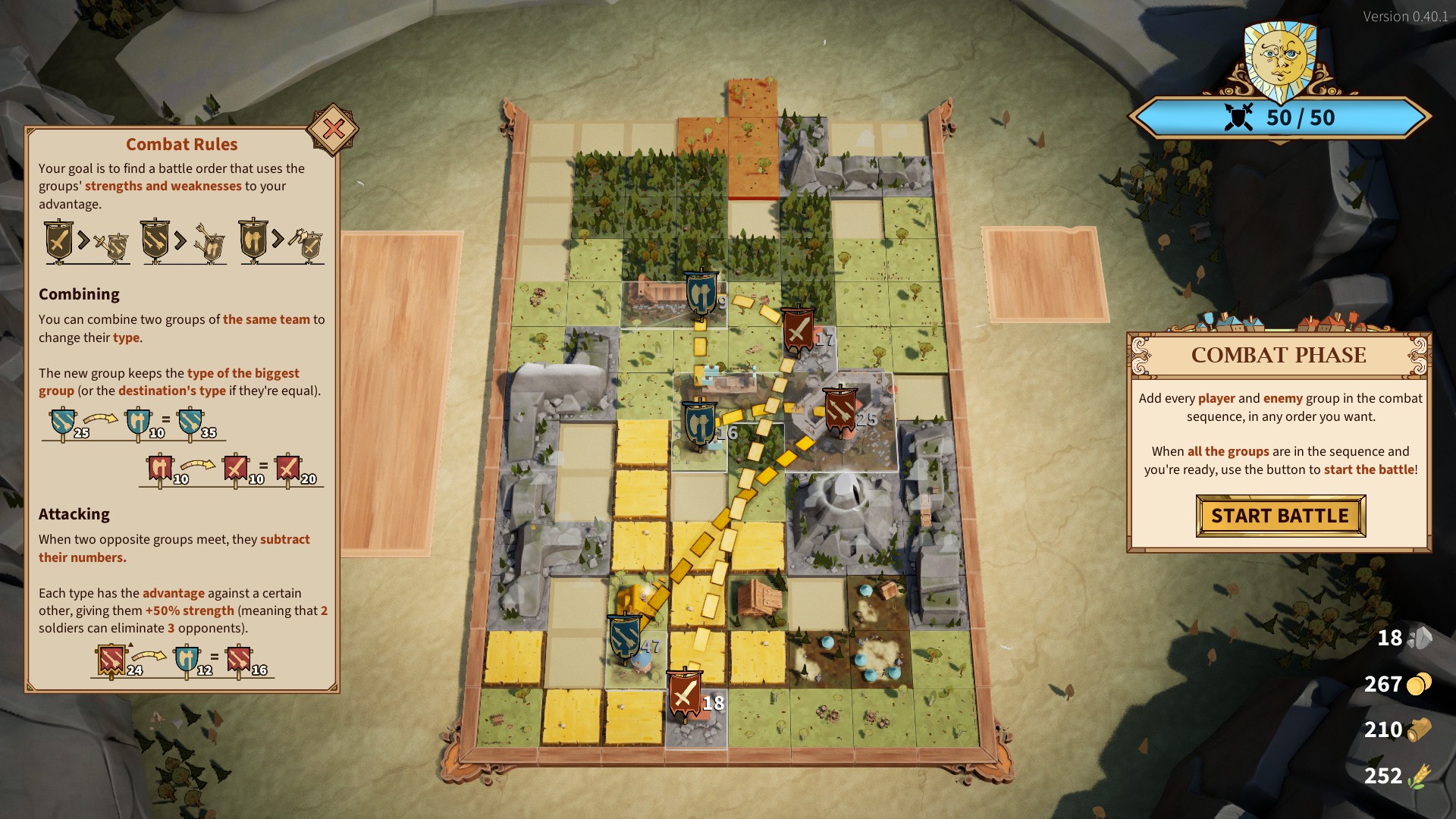
In simpler terms, consider a castle built along a river. It must connect to specific sections of the river (let’s call them ‘river riles’) and for each tile it controls within its network, it gains troops. Meanwhile, a barracks produces soldiers based on the gold you acquire during an encounter. Various playstyles are available, but both players generate soldiers while placing their tiles in the building phase, similar to enemy territories.
During the final stage, you have the opportunity to choose your squad and strategize a path for them within enemy territory, determining when and where they should engage in battle. This is important because combat operates like a game of rock, paper, scissors: Archers are superior against heavy troops, heavy troops overpower light troops, while light troops outmaneuver archers. You can overpower heavy troops with numerous light troops, but it requires a substantial numerical advantage. If you emerge victorious, your surviving soldiers will receive extra gold; if you lose, the number of remaining enemies will be deducted from your total HP.
In the heat of the game, combat appears simple at first glance, but delves deeper as I uncover its intricacies. For instance, when I combine two groups of my units, they morph into the dominant unit type of the larger force, enabling me to amplify that particular strength significantly. It may seem counterintuitive, like why bother with archers if the adversary only fields light troops? However, I’ve learned to strategize by deploying my archers alongside my heavy troops before engaging the enemy. The complexity doesn’t end there. There are times when I’ll purposefully lead my units into unfavorable skirmishes to diminish their numbers, making it possible for me to reorganize them in a strategic position before attacking another enemy stronghold.
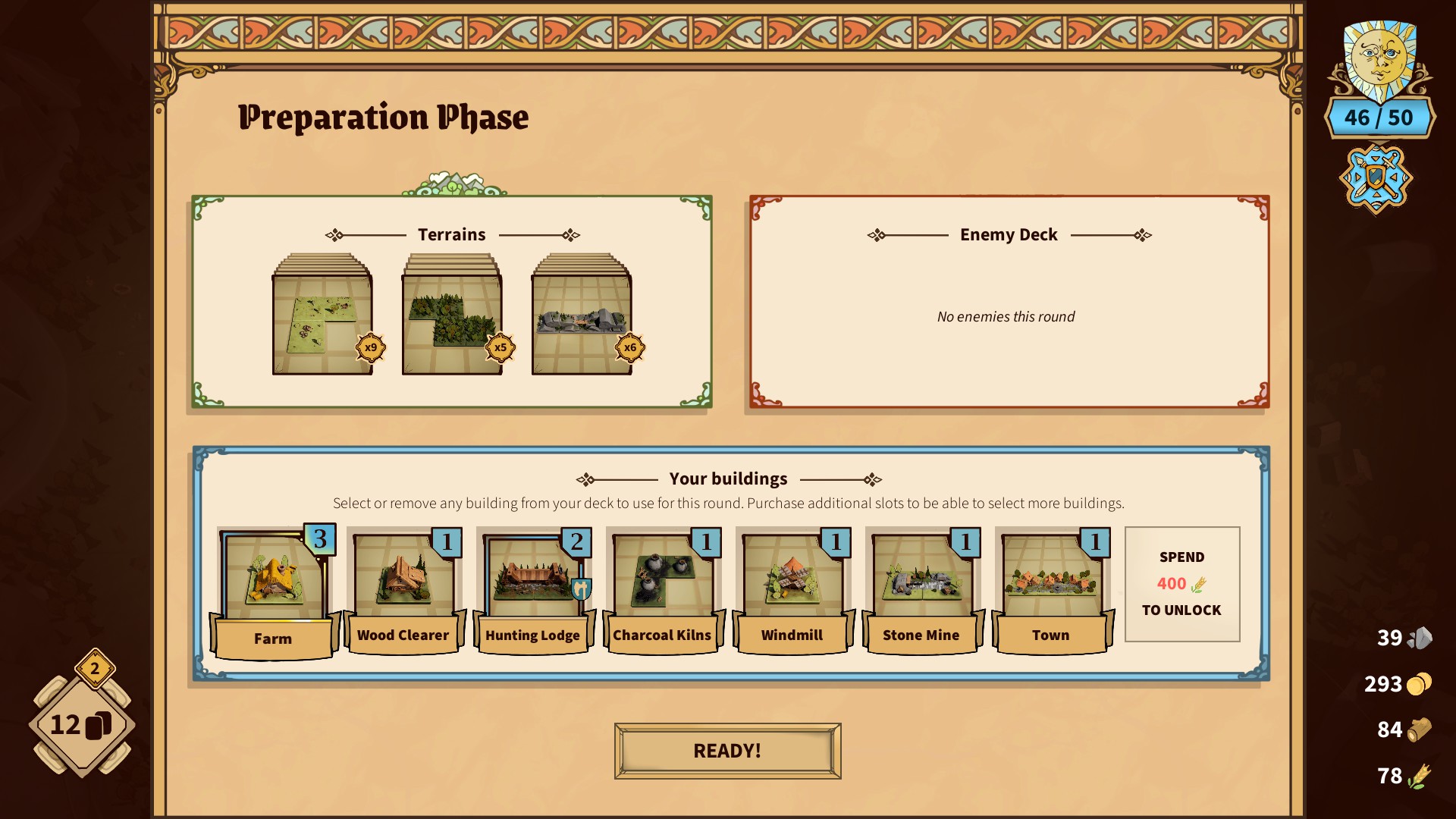
In this game, both the strategic building process and the tactical combat elements are incredibly rewarding. Occasionally, there’s some randomness (RNG) that might cause issues, but more often than not, it’s your own decision-making that leads to failures. As you progress, you’ll uncover an abundance of cards within the technology tree, and even gain access to extra factions, each with their unique buildings and advantages. For instance, The Duchy heavily depends on farming and conventional feudal structures for unit creation. Conversely, The Republic is based on wealth, and so forth. The game does an excellent job of keeping you informed about your current objectives and tasks to advance, ensuring you always have a mission to strive towards – except, of course, the ultimate goal of completing Act 3.
Let’s talk about the boss encounters now. Each boss map features a unique mechanic that adds challenge to the gameplay. In Act 1, The Wall restricts your building area, forcing you to build strategically and economize space while advancing. The Fortress in Act 2 automatically summons troops whenever you place a building along specific lines on the map, making it difficult to manage resources and control the battlefield. This is the boss that I found particularly challenging because of its harsh penalties. In Act 3, The Dungeon, the mechanic involves interacting with terrain tiles and adjusting the ‘punishment zones’ as new tiles appear. Additionally, you need to earn gold to delay the appearance of tiles hostile to you.
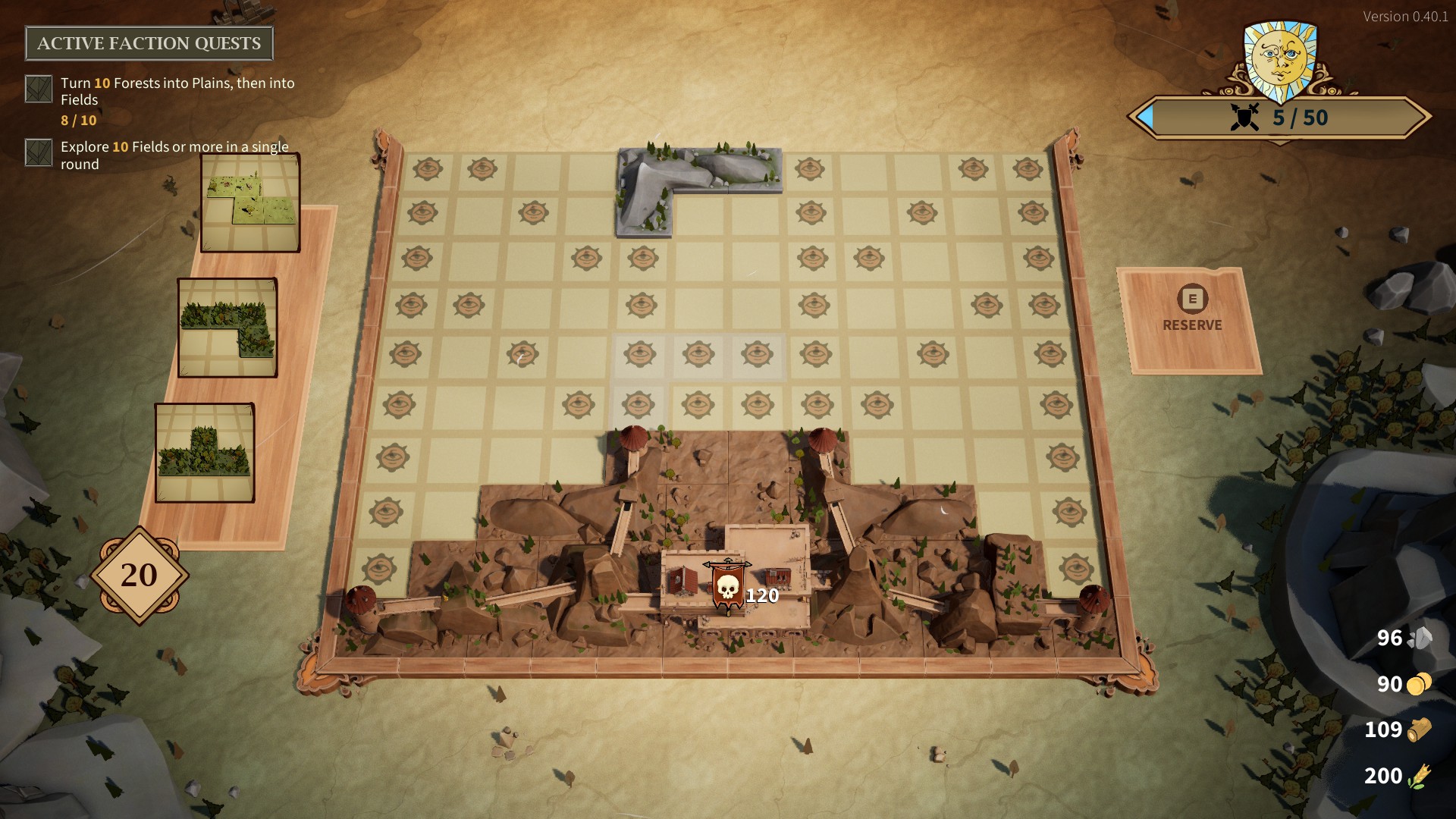
From a gameplay perspective, each of the bosses presents an engaging puzzle to solve, and it’s incredibly satisfying to outsmart them. However, I find it disappointing that the combat encounters don’t adhere to the classic rock-paper-scissors system. Rather than having different types of troops with unique advantages over others, they utilize a versatile unit that can match any of your troop types in battle, resulting in a game solely based on numbers.
It seems a bit unusual given the overall structure of the game, but I understand why developers might have chosen this approach. With the existing challenges of amassing troops due to the unique boss mechanics, adding additional requirements for specific troop types could be overly demanding. Consequently, the outcome of these boss battles is essentially determined during the building phase, leaving little opportunity to alter the result through combat strategies.
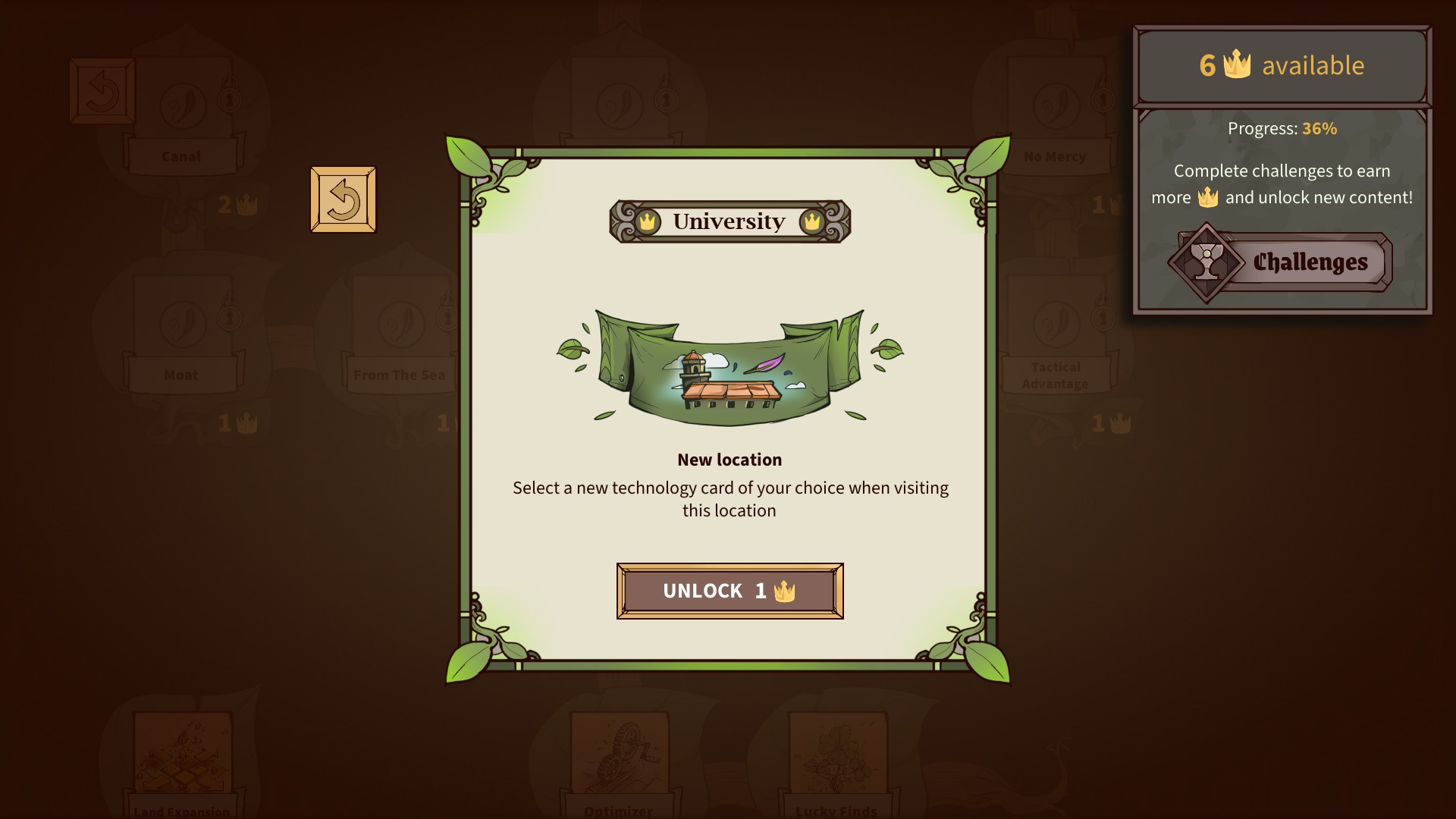
Just like Balatro, your playing cards accumulate badges demonstrating the maximum difficulty you conquered the game on. Furthermore, you can add modifiers to intensify the experience – for example, starting with just one life or being unable to save enemy tiles in the reserve space. In essence, Drop Duchy offers a wealth of replay value and versatility.
Besides the challenge I find in the boss battles (and I’m not suggesting any alternative solutions here), I must admit that I can’t find much fault with Drop Duchy overall.
Drop Duchy seamlessly merges city-building, tactical combat, and puzzle elements reminiscent of Tetris within a roguelike framework. The game’s design is so harmonious that the different parts appear as if they were tailor-made for each other. It’s a small yet meticulously crafted gem, showcasing a clear understanding of its purpose and execution.
More reviews on DBLTAP:
Read More
- Apothecary Diaries Ch.81: Maomao vs Shenmei!
- 30 Best Couple/Wife Swap Movies You Need to See
- Gachiakuta Chapter 139: Rudo And Enjin Team Up Against Mymo—Recap, Release Date, Where To Read And More
- Netflix’s ‘You’ Season 5 Release Update Has Fans Worried
- Gold Rate Forecast
- Every Minecraft update ranked from worst to best
- Mobile MOBA Games Ranked 2025 – Options After the MLBB Ban
- Batman and Deadpool Unite: Epic DC/Marvel Crossover One-Shots Coming Soon!
- Who was Peter Kwong? Learn as Big Trouble in Little China and The Golden Child Actor Dies at 73
- Ncuti Gatwa Exits Doctor Who Amidst Controversy and Ratings Crisis!
2025-05-05 18:17